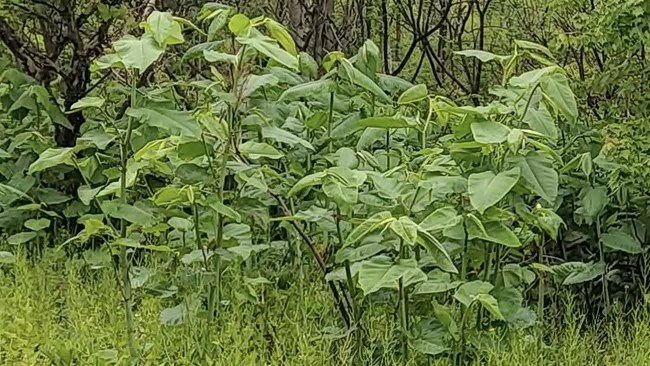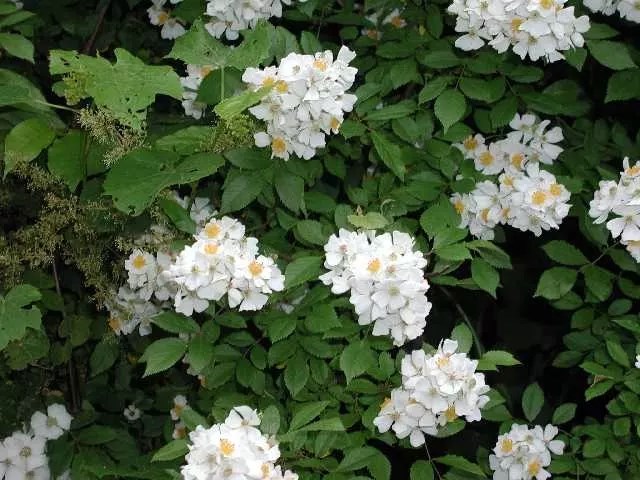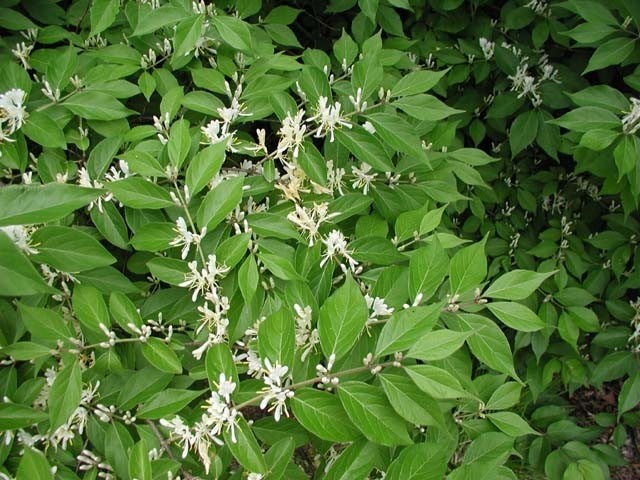|
There are several different types of non-native plant species within the park. These plants were used as ornamentals or for erosion prevention and bank stabilization. Now they are invading the historic, former lakebed and surrounding fields and woodlands, and in some cases have reached problematic stages. Efforts are currently underway to maintain control of the most threatening exotic species in areas of the park where the populations can be managed. The park presently has an Integrated Pest Management Program for giant and Japanese knotweeds, exotic bush honeysuckles and multiflora rose. 
NPS/Margaret Speicher Japanese Knotweed (Fallopia Japonica)Japanese knotweed, from Japan and can be found in various areas across the United States. These invasives grow in a variety of places; including near water, roads, and trails. It can resemble bamboo, but is part of the buckwheat family. The plants grow fast- anywhere between 3-12 inches each day in their early growing season! Not only do they grow in height, but they also expand quickly, causing native vegetation to be crowded out. This can cause river banks to erode. The plant grows green/white flowers in the late summer to fall season. The first frost marks the end of the growing season for Japanese knotweed, but they return in the spring due to the rhizomes, or underground stems. The only way to permanently get rid of Japanese knotweed it to dig out the the rhizomes. It can be difficult to maintain control of this species.
NPS Multiflora Rose (Rosa Multiflora)Multiflora rose is a perennial that was introduced in the United States during the 1860s. It was originally used as ornamentation in gardens. It can be found in fields, along the side of the road, and in sunlit areas of a forest. This shrub can grow up to 16 feet tall and has thorny stems. White or pink flowers bloom in May or June and have a nice fragrance. Many species of birds feed on the 'hips," which is the red fruit that grows on the flower, thus contributing to the spread of this invasive species. These birds include northern cardinals, cedar waxwings, and American robins, thus contributing to the spead of this invasive species.
NPS Exotic Bush HoneysucklesLike other non-natives, exotic bush honeysuckles were first used as a landscape plant. They prefer the shade and can be found in areas such as roadsides, forests, and fields. They grow quickly with heights reacing up to 20 feet, and crowd out native plants, hiding them from the sunlight and restricting their nutrients. They flower in the early spring and have red or yellow fruit by late summer into fall. The seeds are spread by the birds that feed on the fruit. |
Last updated: January 10, 2022
